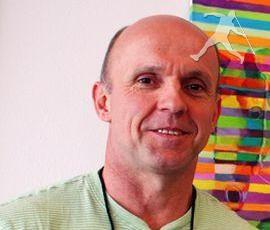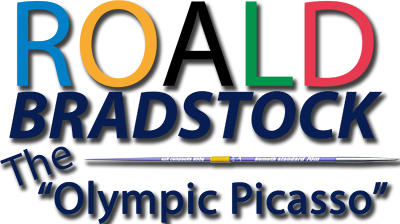
01 Jun Artists taking the lead – my entry
By Roald Bradstock – 1 June 2009
Last Friday was the last day for entries for the 2012 and the Arts Council’s ‘Artists Taking The Lead’ project.
For those of you that do not know this project has a budget of £5.4 million for 12 new works of commissioned art, each worth up to £500,000.
The commissioned work can be in any art form and in any location in the UK.
I had many ideas that I wanted to propose but the rules clearly state that there could only be one entry per artist/ person. It was tough but I picked out my best idea and pitched it. The hardest thing to do was to do it in just 400 words or less.
Have you heard of the expression “a picture worth a 1000 words?”. Well try describing a visual image and concept in only 400. It is tough. I used all 400 words.
This was my entry: Living Landscapes:
 This idea turns a hillside into a giant canvas and projector screen. The massive images created out of flowers and crops change colour, position and location as the seasons change. There would only be one image visible at a time. The full effect would take nine to 12 months to unfold and would be captured on time lapse video.
This idea turns a hillside into a giant canvas and projector screen. The massive images created out of flowers and crops change colour, position and location as the seasons change. There would only be one image visible at a time. The full effect would take nine to 12 months to unfold and would be captured on time lapse video.
There are three different versions:
1) Create a image progression sequence: a horse jumping, a person running – the sequence is gradually unveiled using flowers that bloom at different times of the year in different colours. The resulting effect – a image that changes colour, position and location on the hillside – it would move over time.
2) Create a stationary image – it changes positions and colours but not location.
3) Create a single image that changes colours but not position or location.
These concepts combine art with British agriculture and horticulture. It also uses nature, science and technology.
There are two obvious subjects for these moving scapes:
1) A galloping or jumping horse – this connects with “2012”, the historic hillside chalk horses (in Witlshire) and with Eadweard Muybridge’s famous revolutionary photographic sequences in the 19th century.
2) A paralympic athlete: a wheelchair athlete racing for the finish line or a Goalball player diving to stop a goal. With the Paralympic theme another unique element could be added to the landscape – sound – using natures energy: wind.
For the wheelchair athlete wind chimes – symbolic items for wheelchair spokes – could be added. Or for a goalball player image, thousands of little bells could be placed in varying sized clusters around the hillside.
Using wind chimes and bells in the piece would make these landscape images even more unique – from afar they would be huge colourful images, up close the image changes from a visual piece of art to a audio work.
These hillside images are just half the concept. The other part is about the process behind creating this public work. Communities and schools will be involved in creating them working together and taking ownership. Photographs, videos, discussions forums could be created to document the creation process and also so that everyone in the world can become “involved” and watch through the Internet.
These living moving landscapes would become national landmarks, a place for tourists to come visit and a place for future generations to come and see a 2012 Olympic / Paralympic legacy.
In July each region in the UK will select three to five finalists for further development of their ideas. The winner for each region will be announced this Autumn.
Roald Bradstock, who was born in Hertfordshire, represented Britain in the 1984 and 1988 Olympics in the javelin. He now lives in the United States and has increasingly concentrated on his art. In 2000 he won the United States Olympic Committee Sport Art Competition and then exhibited at the International Olympic Museum in Lausanne. In 2003 he won the prestigious “International Sports Artist of the Year Award”. He is a founding member of the Olympic revival movement called “Art of the Olympians”. His artwork had been seen on ABC, NBC, CBS and been exhibited form the United Nations to Times Square. In the last few years he has been dubbed the “Olympic Picasso” for his visionary ideas on how to combine sport and art with the Olympics and Paralympics in 2012.
To view his work visit www.roaldbradstock.com.
Comments
Roald, good luck with your proposal. Your passion for art and the
Olympics shines through. I really hope that the award goes to
someone like you that is able to marry the two together
perfectly.
By Ron, Harpenden
4 June 2009 at 11:55am


